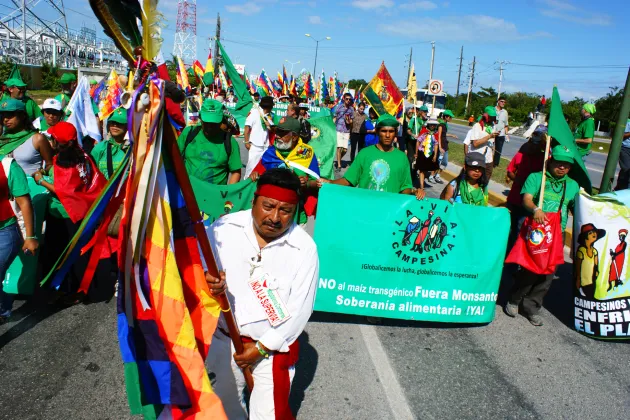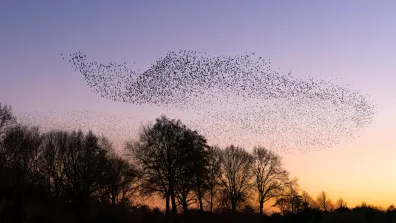Tea trade trouble for Sri Lanka's crucial rainforests
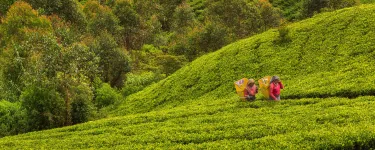
The UK consumes around 100 million cups of tea every year, making it the fourth biggest importer in the world — after the United States, Pakistan, and Russia1
.
The tea in UK mugs comes from all over the world, majorly Kenya, India and Sri Lanka. The tiny island of Sri Lanka is one of the largest exporters of tea in the world — second only to export-giant, China — producing 12% of the world’s exports. Alongside tourism and the garment industry, tea is a crucial sector in Sri Lanka’s export economy, and it is an existential threat to Sri Lanka’s environment and the world’s climate systems.
The importance of rainforests
There are only 1.84 billion hectares of tropical rainforests left in the world — in South America, the Caribbeans, Central Africa, India, Sri Lanka, Eastern and South-East Asia, New Guinea, and the Pacific Islands. These rainforests capture around 2.4 billion metric tonnes of carbon each year, equivalent to around half of the USA’s annual emissions.
Sri Lanka houses only 0.011% of global rainforests. However, despite its size, Sri Lanka’s rainforests are regarded as a key global biodiversity hotspot, one of only 36 such hotspots in the world2
. It has the highest biodiversity by area of any Asian country. About 90% of Sri Lanka's endemic species live in its rapidly decreasing rainforests, as well as nearly all the country’s woody endemic plants. Unique species of birds, amphibians, plants, and indigenous medicines have been found here. The deforestation driven by tea production risks causing their total extinction.
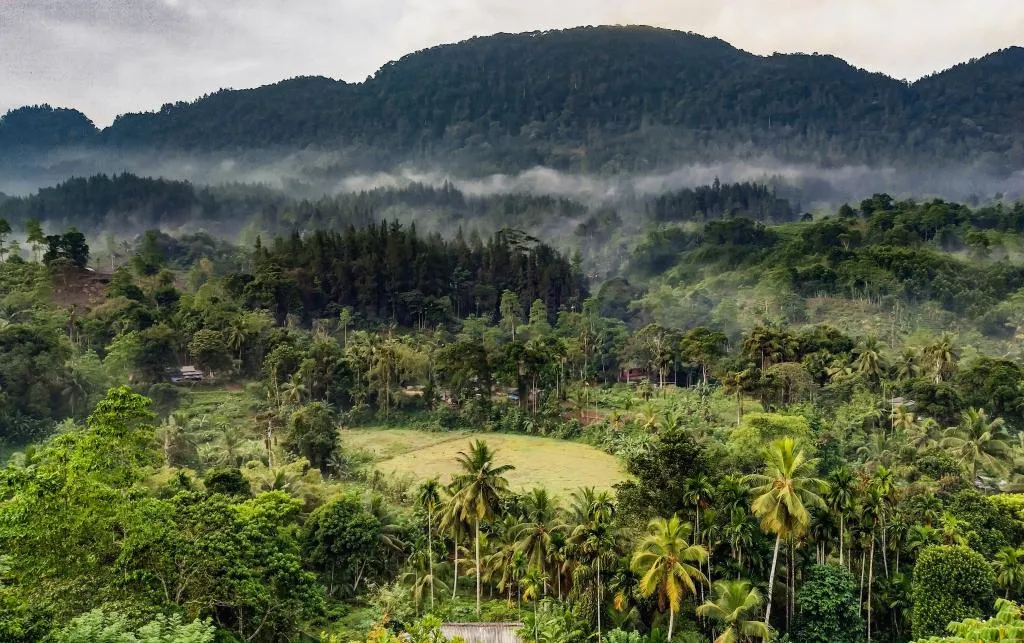
Colonisation and deforestation
Before British and Dutch colonisation, Sri Lanka devoted its land and labour power to agricultural production that provided varied food crops for Sri Lankan subsistence. In 1740 the Dutch introduced coffee to increase the profitability of its colony. The British expanded coffee production, destroying the ecosystems in forests and mountain areas.
By 1860, British colonisers had turned Sri Lanka into one of the biggest producers of coffee in the region. However, ten years later coffee plantations were hit by a fungal disease (Hemileia vastatrix, also known as coffee leaf rust) that decimated the crop. The British responded by clearing yet more forests and tropical rainforests, expand tea production to continue its extraction of wealth from Sri Lanka. In 1872, James Taylor — the first tea planter in the country — established a tea factory and started exporting: through further business agreements with Thomas Lipton, Sri Lanka’s tea exports ballooned, and it took up its place as one of the biggest tea exporters in the world.
In 1881, 84% of Sri Lanka was forested. In less than 20 years, British colonial agriculture reduced forest coverage to just 70%. Today, only around 200,000 hectares of rainforests are left in Sri Lanka — around 3% of the country’s total land area.3
Tea plantations now cover over 220,000 hectares — an area larger than Greater London, in a country the size of Scotland.
Cash crops and postcolonial debt
Following independence in 1948 and the introduction of neoliberal policies in 1978, Sri Lanka has continued to devote its economic capacity to the production and export of raw materials, commodities, and assembled garments. This model, first established in colonial times, remains common across the global South — and works to the benefit of international investors in the Global South. The most fertile and productive land is kept from ordinary people to produce cash crops — such as tea — to be exported to other countries, for the profit of already-wealthy multinational corporations. Those working in these farms and factories must then use their meagre wages to buy essential food crops from abroad. This over-reliance on commodity production exposes ordinary people to price fluctuations and other market volatilities.
In recent years the cultivation of oil palm has exploded, as oil palm became a central resource in highly mechanised and industrialised food production. Between 1960 and 2010, Sri Lanka lost close to 1 million hectares of its forests — about one third of its total. Most of the expansion into forests is carried out by powerful individual business owners or by estate corporations, with the support of the government — despite this contradicting its own forest protection regulations.
At the same time, Sri Lanka — like many other countries in the global South — is tied to a vicious cycle of production for export, in order to pay for its debt and to secure foreign currency reserves for their economy.4
The hard currency secured from exports — usually US dollars or euros — is necessary for paying foreign loans, balancing the government budget and balance of payments and providing access to international market goods needed to continue production, or simply to feed and clothe the population. This precarity was central to the economic crisis that has engulfed Sri Lanka since 2020 and these export-economics continue to be the major driver behind deforestation. (Read more about the Sri Lankan debt crisis.)
Green deserts: the problem with monocultures
Tea and oil palm plantations might look lush from above, but they are in practice ‘green deserts’. Large-scale commercial plantations are monocultures and are unable to support the same rich and biodiverse micro habitats. Sri Lanka's forests are central to providing clean fresh drinking water: rapid deforestation is destroying water catchment areas, causing water shortages, and threatening life for humans and animal species. Many rare species that live in these forests now face extinction due to habitat loss. Rainforests absorb excess rainwaters from monsoons: without them the area will experience more flooding, leading to landslides, and land degradation devastating for human and animal populations and agriculture.
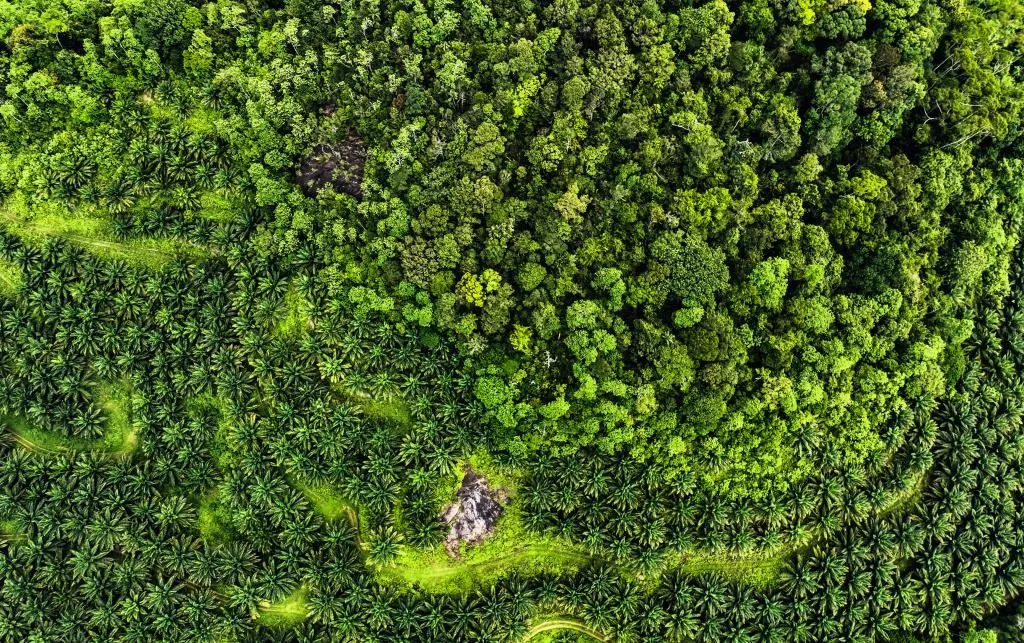
Moreover, the excessive use of agrochemicals in these plantations endangers plantation workers, farmers and local communities who breathe in these dangerous agrotoxics or ingest them on crops and in polluted water supplies, leading to a litany of chronic diseases.
Deforestation is leaving only isolated pockets of rainforests amongst vast green deserts of tea and palm oil plantations. These “leopard-spotted” areas are insufficient for the survival of flora and fauna. Unable to safely move across vast commercial plantations, animals are confined to smaller and smaller feeding and living zones, increasing competition for food and water — leading to dwindling populations. Plants are similarly unable to replicate naturally or over sufficiently large areas to maintain their populations.
It is also devastating for tea cultivation, endangering the livelihoods of many Sri Lankans. Unfortunately, tea planters driven to recoup their financial losses are expanding cultivation, by clearing more rainforests: while newly cleared land is immensely fertile, soon the productivity collapses and the yield are reduced. In a vicious cycle, tea planters again destroy rainforests and expand tea plantations to compensate for the loss of land productivity.
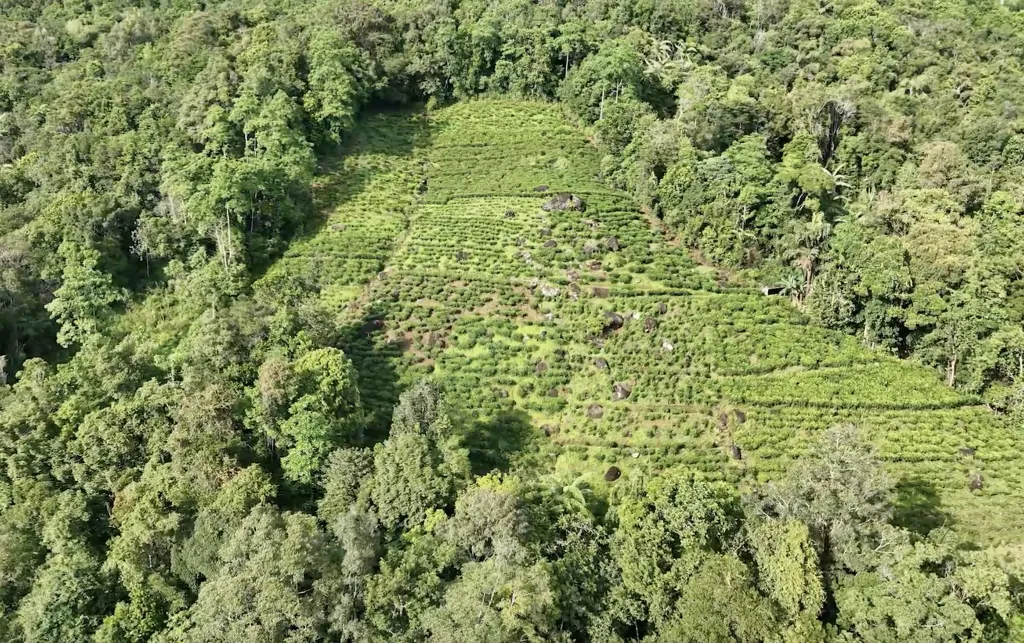
Plantation models pushing poverty
Sri Lanka’s tea production is largely operated on two different models. In the so-called “hill country” — high altitude districts such as Nuwara Eliya — most of the land is owned and operated by large Estate companies and foreign corporations employing precarious workers. These workers, most of them from the Tamil minority, have limited rights and rank among the lowest paid workers in the country.5
Recent investigations have found serious cases of abuse, and widespread failures in the application of worker safety regulations, even among suppliers exporting to companies with Fairtrade and Rainforest Alliance certification.6
Elsewhere, such as in the South-Western provinces, plantation companies coexist with a vast number of smallholder farmers who live in and around important protected areas, such as the Kanneliya rainforest and Sinharaja Rainforest, a recognised UNESCO World Heritage site. Smallholder farmers directly supply plantation companies, and it is plantation owners that set prices and production levels, with very little negotiation with intermediaries and estate companies.
The only way to solve the environmental and climate crisis, and tackle this dangerous deforestation is to radically transform these destructive models. Peasant agroecology — including the redistribution of estate lands to plantation workers — and agroforestry are needed to respect and restore crucial rainforests, while maintaining livelihoods.
A new way forward: peasant agroecology and agroforestry
Agroforestry literally means ‘agriculture with trees’. It is a very ancient agricultural system that maintains biodiversity and environmental health: food and commercial crops are grown alongside shrubs, trees of different heights and varieties, and often livestock. In Sri Lanka, smallholder tea farmers who live in the rainforest areas combine tea cultivation with other cash crops like cinnamon, coffee, pepper, cardamom, cloves, betel nut, coconut, wallapatta (or agarwood), as well as food crops such as jackfruit, bread fruit, curry leaves, garcinia, soursop, banana, durian, vegetables, and greens. These methods also work to maintain natural water cycles and facilitate the continuation of the forests’ crucial role in removing CO2 from the atmosphere.
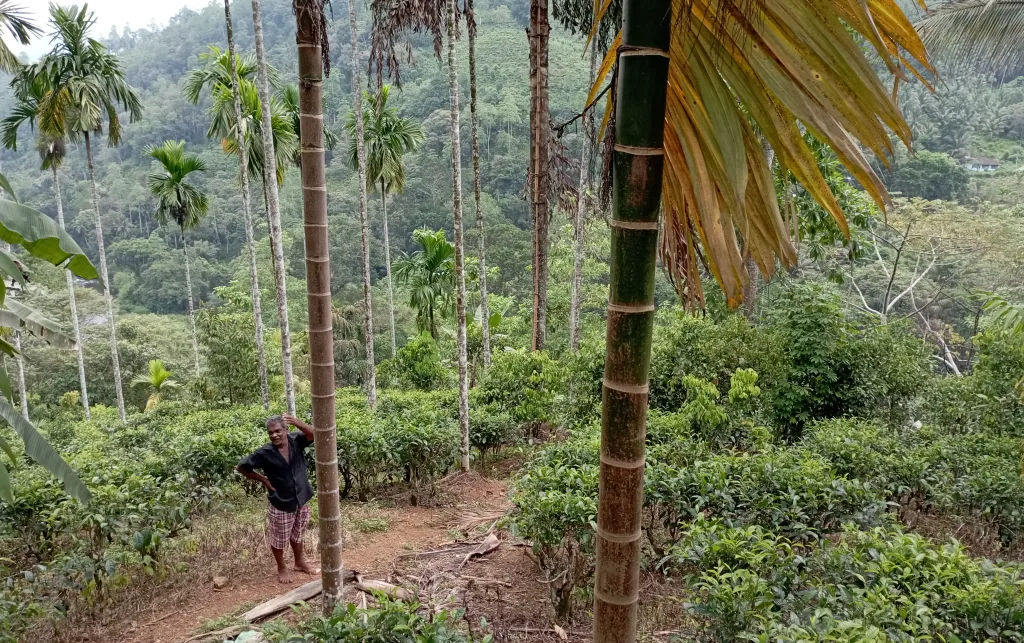
Sri Lankan smallholder farmers have been practicing agroforestry for more than 2,500 years and today, with peasants’ movements like MONLAR (The Movement for Land and Agricultural Reform), they are spreading the use of multi-cropping and agroecology. Local food production also provides security in food supply ensuring farmers a higher and more diversified means of income: it protects against the fluctuations of commodity prices on global markets that currently have devastating impacts on agricultural communities.
These practices can transform green deserts back into a fertile natural ecosystem, re-enriching barren and polluted soils, providing corridors that relink animal habitats and repairing water catchment areas, providing water security and protection against weather and climate impacts, such as flooding and landslides, by preventing soil erosion. Agroforestry practices have already proven incredibly successful, even reviving local flora and fauna species that were thought to have disappeared due to agrochemicals and monoculture plantations.
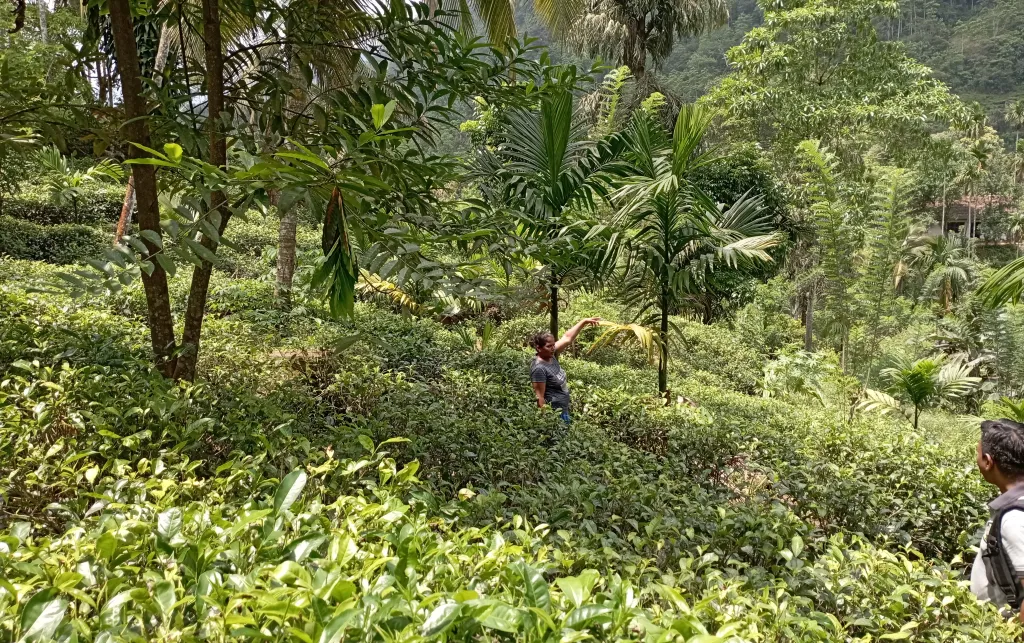
The struggle for justice. The struggle for food sovereignty
Despite the proven positive results of these practices, corporations and powerful local businesses — who have profited from the exploitation of workers and farmers and the extraction of Sri Lanka’s environment — are resistant to change and key institutes like the Tea Research Institute in Sri Lanka still recommend planting tea as a monoculture to ensure high yields and return on investments.
We must challenge the illogicality of infinite extraction and consumption on a planet with finite resources that aims to maximise profit for the few, not improve the lives of the many.
Peasants and farmers movements have proven that there is a solution to the food crisis, that works for people and planet. We need to stand in solidarity with these movements to demand environmental justice and food sovereignty.
